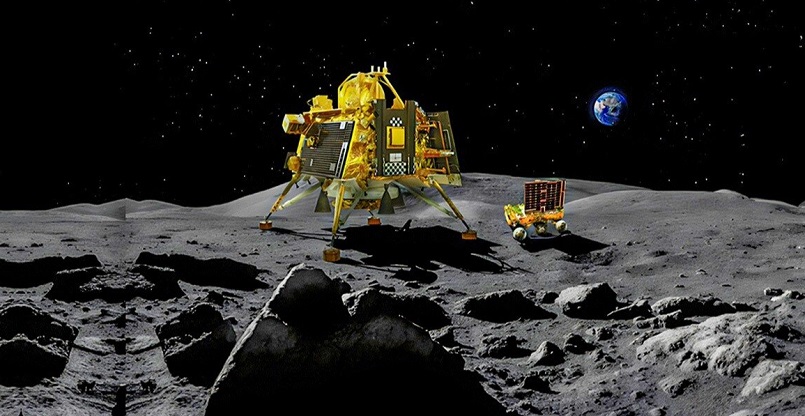Srinagar: The “founding father” of China’s lunar exploration programme has disputed India’s claim that its spacecraft landed near the moon’s south pole in a historic mission in August.
After the Chandrayaan-3 landing, Prime Minister Narendra Modi said that “through the hard work and talent of our scientists, India has reached the south pole of the moon, where no other country in the world has ever reached”.
Ouyang Ziyuan, who was the chief scientist on China’s first lunar mission, said it was inaccurate to say the Indian spacecraft had landed near the lunar south pole.
=
“The landing site of Chandrayaan-3 is not at the lunar south pole, not in the lunar south pole region, nor is it near the lunar south pole region,” said Ziyuan, claiming that the lunar landing at the south pole is “wrong”.
Chandrayaan-3’s rover landed at a latitude of around 69 degrees south. Ouyang said it was within the moon’s southern hemisphere but not the polar region, which he considered to be “between the latitudes of 88.5 and 90 degrees” South China Morning Post (SCMP) reported.
According to a report in Bloomberg, 69 degrees south on Earth would be within the Antarctic Circle, but the circle on the lunar surface is much closer to the pole.
The Earth’s axis is tilted at around 23.5 degrees and accordingly, the southern pole is defined to be between 66.5 and 90 degrees south. Ouyang, however, argued that since the Moon’s tilt was only 1.5 degrees, the polar region was much smaller.
The publication also quoted Richard de Grijs, a professor at Macquarie University’s School of Mathematical and Physical Sciences in Sydney, who said that Chandrayaan-3 had landed in a region outside the lunar south pole.
“While the probe’s landing site is frequently referred to as the ‘polar region’ in news media and other publications, the location of Chandrayaan-3 is not within the lunar Antarctic Circle, defined as the lunar geographic region further south than 80 degrees south,” SCMP quoted the professor as saying.
Meanwhile, according to NASA, the Moon’s “entire” polar region extends from 80 to 90 degrees south, and hence Chandrayaan-3 landed outside the polar region but at a higher latitude than achieved by other Moon missions, SCMP reported.
But after Chandrayaan-3’s successful landing, NASA chief Bill Nelson congratulated the Indian Space Research Organisation (ISRO) on their successful “lunar south pole landing”.
Ziyuan is not the first Chinese scientist to have questioned Chandrayaan-3’s achievements. Earlier Pang Zhihao, a Beijing-based space expert, had told Global Times that China is far more advanced in various areas. China can send orbiters and landers directly into the Earth-Moon transfer orbit since the launch of Chang’e-2 in 2010 – something India can’t do considering the limited capacity of its launch vehicles, the scientist had said.
The landing on the south pole of the Moon is of immense interest to countries. There is strong evidence that the lunar south pole has the presence of ice molecules, which could be of great significance for future space explorations.











